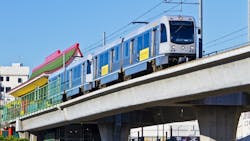Major Cities Turn to Transit-Oriented Developments to Address Housing Concerns
Residents in major metros across the U.S. struggle to combat rising prices, but some local governments are hoping to alleviate these concerns through the implementation of transit-oriented housing. These types of developments are located at or near public transportation stations, connecting residents with transit services while providing reliable, attainable housing, according to a report from the Associated Press. The housing type also helps bolster the use of public transit throughout cities and cuts down on traffic from personal vehicle use.
To allow for more of this housing type to be built, states across the U.S. are passing laws targeting restrictive zoning policies. For instance, Colorado now requires cities to allow an average of 40 housing units per acre within a quarter-mile of transit stations, and Utah has a similar policy at 50 housing units per acre. In Washington, the governor recently signed a bill to allow taller housing developments in mixed-use commercial zones near transit.
However, this housing model is not without its challenges.
Some advocates argue the lofty goals of transit housing are falling short due to fierce local resistance and lack of funding and support at the federal and state levels.
Higher mortgage interest rates, more government red tape, rising construction costs, and lack of investment at transit stations also have contributed to a troubling trend—nine times more housing units built far from public transit versus near it in the past two decades, according to a 2023 Urban Land Institute study.
